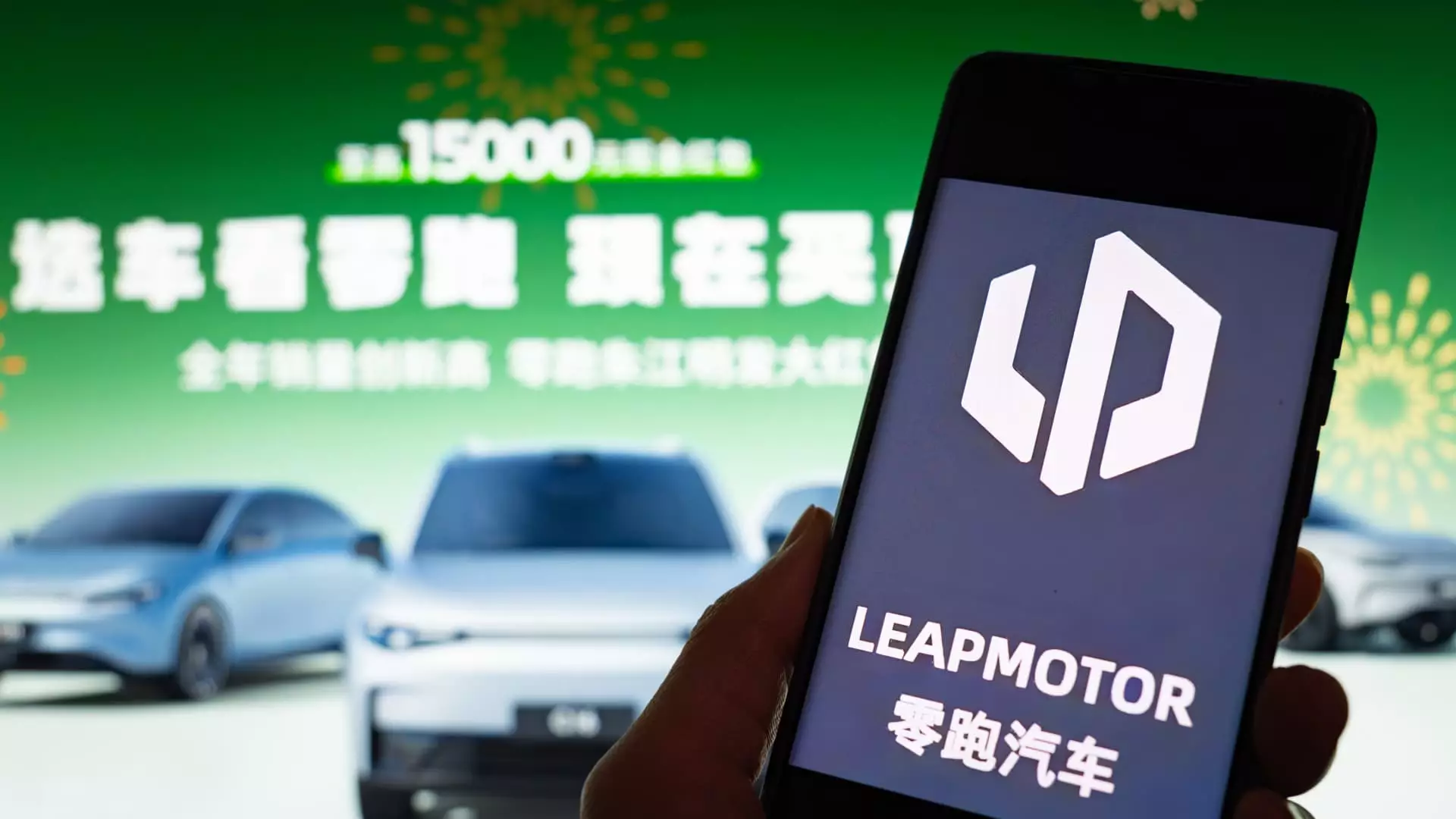The landscape of the electric vehicle (EV) market in China is rapidly evolving, marked by impressive delivery milestones from key players such as Leapmotor and Aito. In perhaps one of the most competitive months recorded, Leapmotor, backed by the automotive giant Stellantis, recorded a staggering 45,067 vehicle deliveries in May. This figure not only illustrates a 148% jump from the previous year but signals a profound shift in consumer preferences towards innovative and affordable electric solutions. Leapmotor also unveiled its updated C10 model—a mid-sized SUV priced at an accessible 122,800 yuan ($17,045) and saw over 13,000 units delivered within the month.
Conversely, Aito, which leverages technology from Huawei to enhance its offerings, announced its new record of 44,454 vehicles delivered. The launch of their ultra-luxury Maextro S800 on May 30, starting at a premium 708,000 yuan, showcases an interesting approach to target both the luxury and mainstream segments of the market. This strategy effectively broadens the spectrum of options available to consumers, thereby enhancing competition.
The Price War Escalates: BYD’s Strategic Moves
As the landscape shifts with rising models and ambitious startups, the price war ignited by BYD remains a crucial factor influencing sales and market stability. BYD, which solidified its dominance with an impressive 376,930 vehicles sold in May alone, took dramatic measures to slash prices across 22 models. The Seagull hatchback witnessed a significant reduction of 20%, bringing it down to 55,800 yuan. This strategic pivot underscores BYD’s intent to maintain market leadership amidst escalating rivalry, but it also casts a looming shadow over the financial health of numerous competitors.
The drastic price cuts stirred anxiety across the industry, reminiscent of the tremors felt during the Evergrande fiasco—a stark reminder that the realm of automotive manufacturing in China could be susceptible to similar financial pitfalls. Despite BYD’s vigorous refutation of claims regarding manipulation of dealer cash flows, the ripple effects of this intense competition have started to reshape industry perceptions and investor sentiments.
Emerging Players and Varied Growth Trajectories
While heavyweights like BYD thrive, other startups are experiencing mixed fortunes. Xpeng’s May deliveries dwindled slightly from 35,045 to 33,525, yet a robust year-on-year growth of 230% keeps it in the positive light. On the other hand, companies such as Xiaomi, which delivered over 28,000 vehicles in May, demonstrate that diversification is palpable, as evidenced by the teasing of a new luxury YU7 SUV model expected to launch in July.
Li Auto, another noteworthy competitor, saw a modest increase in deliveries to 40,856 vehicles, translating to a year-over-year uptick of 16.7%. The situations faced by Geely-owned Zeekr, achieving only a slight growth of 1.6% with 18,908 delivered vehicles, illustrate the precarious balance in the market where innovation must be coupled with strategic differentiation to appeal to a choice-heavy consumer base. Zeekr’s introduction of free driver-assistance technology was an attempt to carve a niche amid fierce competition.
Nio’s deliveries showcased a downward trend, slipping to 23,231 units compared to the previous month. Yet, despite these challenges, its family-oriented Onvo vehicle brand delivered 6,281 units—signifying a glimmer of hope amid pronounced challenges, further proving that brands must continue to innovate to capture consumer interest.
Global Expansion Hurdles and New Markets
With the fierce domestic battles boiling over, Chinese automakers are increasingly eyeing opportunities beyond their borders. However, the challenges posed by tariffs from the European Union and the U.S. stand as formidable hurdles to entry in those lucrative markets. This shift in focus to emerging markets such as those in Africa, as recently reported, suggests a strategic reevaluation of their expansion plans. As evidenced by BYD’s official collaboration in Benin, the path forward may very well lie in accessing regions less saturated with competition.
Chinese EV manufacturers are at a critical pivot point, striving to build an ecosystem that fosters innovation while navigating complex international waters. As competition intensifies and consumer needs evolve, the future promises to be as dynamic as it is uncertain. In this electrifying race toward sustainable mobility, the winners will likely be those who leverage innovation, adaptability, and foresight to meet the demands of a rapidly changing automotive landscape.

